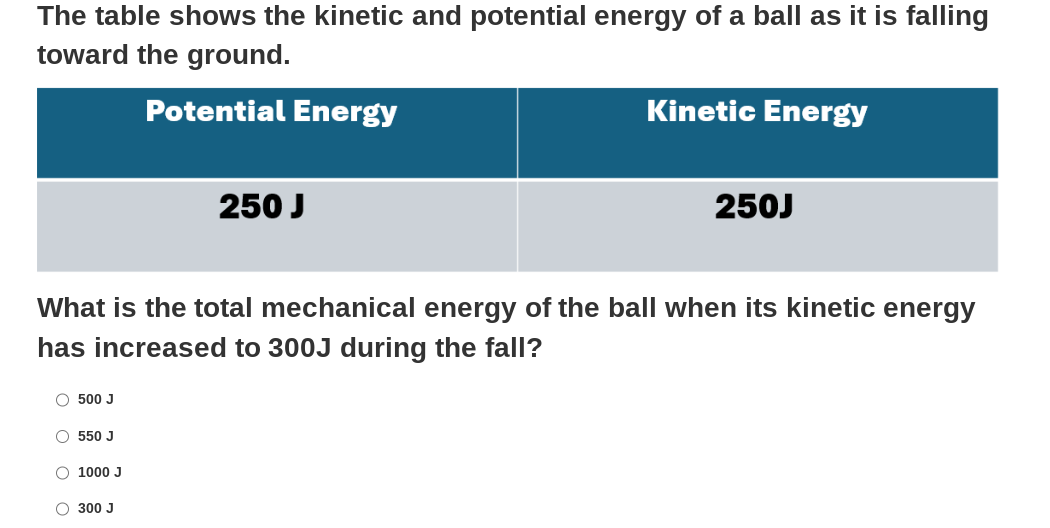What is the total mechanical energy of the ball when its kinetic energy has increased to 300 J during the fall?

Understand the Problem
The question is asking for the total mechanical energy of a ball when its kinetic energy increases to 300 J. To solve this, we need to apply the principle of conservation of mechanical energy, which states that the total mechanical energy (potential energy + kinetic energy) remains constant if only conservative forces are doing work.
Answer
The total mechanical energy of the ball is $500 \, \text{J}$.
Answer for screen readers
The total mechanical energy of the ball is $500 , \text{J}$.
Steps to Solve
-
Identify total mechanical energy The total mechanical energy (TME) of an object is the sum of its potential energy (PE) and kinetic energy (KE). Initially, the potential energy is 250 J and the kinetic energy is 250 J.
$$ \text{TME} = \text{PE} + \text{KE} $$
-
Calculate initial total mechanical energy Using the provided values for potential and kinetic energy:
$$ \text{TME} = 250 , \text{J} + 250 , \text{J} = 500 , \text{J} $$
-
Applying conservation of energy According to the conservation of mechanical energy, the total mechanical energy stays constant regardless of how kinetic and potential energy are distributed. Thus, it remains 500 J even when the kinetic energy changes to 300 J.
-
Final total mechanical energy Thus, the total mechanical energy when the kinetic energy is 300 J:
$$ \text{TME} = 500 , \text{J} $$
The total mechanical energy of the ball is $500 , \text{J}$.
More Information
The total mechanical energy of the ball remains constant at 500 J even as its kinetic energy changes. This is a characteristic of conservative forces like gravity, where energy is transformed between potential and kinetic forms but the total remains consistent.
Tips
- Assuming total mechanical energy changes with kinetic energy: Remember that in the absence of non-conservative forces, TME remains constant.
- Forgetting to sum both types of energy correctly can lead to erroneous conclusions.
AI-generated content may contain errors. Please verify critical information